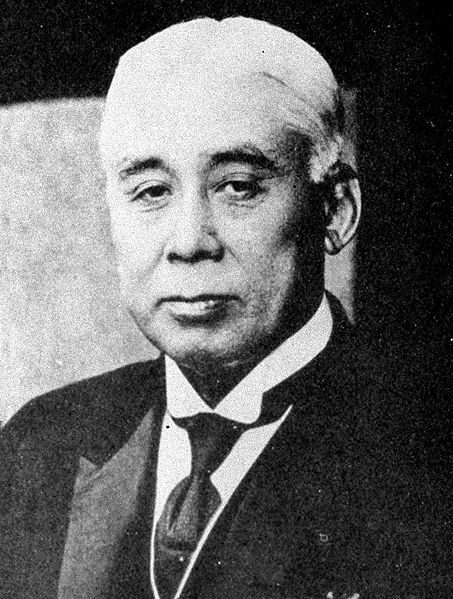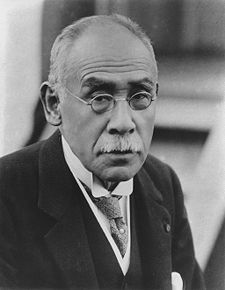Taishō Japan and the Crisis of Japanese Politics
Key Terms
- Hara Takashi 原敬 (1856-1921) PM 1918-21
- Katō Takaaki 加藤高明 (1860-1926) PM 1924-26
- Shidehara Kijūrō 幣原喜重郎 (1872-1951)
- Tanaka Gi'ichi 田中義一 (1864-1929) PM 1927-29
- Zhang Zuolin 張作霖 (1875–1928)
- Washington Naval Conference
- zaibatsu 財閥
- Mitsubishi 三菱財閥, Mitsui 井財閥, Sumitomo 住友財閥, and Yasuda
安田財閥
- Furukawa, Nissan
- Shidehara diplomacy vs Tanaka diplomacy
- Tanizaki Jun'ichirō 谷崎潤一郎 (1886-1965)
- moga
Continuities of the Meiji Era
- Sense of international peril
- Successive military victories with indemnities
- Series of diplomatic victories
- Treaty of Kanghwa
- Treaty of Shimonoseki
- Renegotiation of unequal treaties
- Anglo-Japanese Alliance
- Steady expansion of state power
Challenges of the late Meiji/early Taishō Era (1905- 1918)
- Gains of the Russo-Japanese War are consolidated through bilateral agreements, often with secret sections
- Russo-Japanese Entente (1907)
- Manchuria would be divided into two sphere of influence
- North Manchuria is Russian
- South Manchuria is Japanese
- Both parties having the ultimate goal of complete annexation
- Franco-Japanese Entente (1907)
- Japan recognized French rule over Indo-China in return for
- French recognition of Japanese control over Korea
- Takahira-Root Agreements (1908)
- Japan and US agree to "respect the territorial possessions belonging to each other "
- Implicit trade is
- Phillipines and Hawaai for US
- Korea for Japan with sphere of influence in Manchuria
- "Open Door" for rest of China
- Acceptance of US limits of Japanese emmigration
- World War I
- Japan over-reaches with
- Twenty-One Demands
- Siberian Expedition (aka Siberian Intervention) 1918-1922
- Joint US, UK, Italian, Canadian, French, Japanese intervention to save Czech legions
- But Japanese Army works to support anti-Bolshevik local warlords
- Allies withdraw by 1920
- Japanese intervention is expensive >¥900 M
Outcome of the War
- Russia is gone, but is USSR a biggger threat?Autocracies lose to democracies
- Autocracies collapse in Revolution
- Democracies win
- Postwar idealism
Interwar Conflicts and Rivalries (1918-1931)
- Postwar Idealism
- Treaty of Versailles
- League of Nations
- Kellogg-Briand Pact
- International Labor Organization
- Structures to contain conflict in China and the Pacific
- Rise of power of Diet and political parties
- Hara Takashi 原敬 (1856-1921) PM 1918-21
- Katō Takaaki 加藤高明 (1860-1926) PM 1924-26
- Shidehara Kijūrō 幣原喜重郎 (1872-1951)
- Tanaka Gi'ichi 田中義一 (1864-1929) PM 1927-29
- Foreign policy
- Contrast between Shidehara and Tanaka
- Northern Expedition and the "Nanking Incident"
- Assasination of Zhang Zuolin 張作霖 (1928)
- New political forces
- Business support for political parties: Yamamurō Sōbun
- Universal manhood suffrage (1926)
- Financial instability: economic growth
- Uneven growth
- Growth of zaibatsu and new-zaibatsu
- 1923 "Earthquake Bonds"
- 1927 Financial Crisis
- Cosompolitan Culture
|
|
Terauchi Masatake (1852-1919) PM 1916-1918 |
|
Hara Takashi |
|
Katō Takaaki |
|
Collapse of Interwar Liberalism/Internationalism
- Stock market crash, October 1929
- Minseitō pursues deflationary politicies
- Increasing right-wing violence
- Attempted assasination of Hamaguchi Osachi 濱口雄幸 (November 14, 1931)
- Assasination of Inukai Tsuyoshi 犬養毅 (May 15, 1932)
- Manchuria Incident, September 1931


